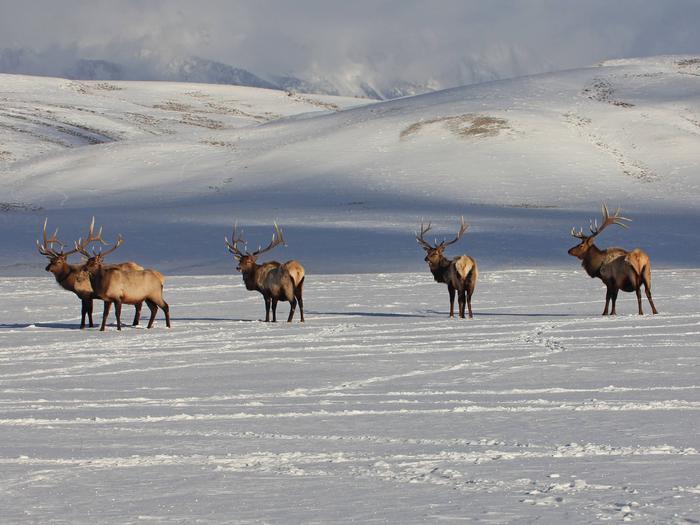National Elk Refuge
The Refuge protects critically important habitat for numerous iconic species, including elk, bison, wolves, trumpeter swans, bald eagles, bighorn sheep, and cutthroat trout. The landscape of the Refuge is primarily glacial outwash plain and rolling hills with a narrow, winding river. The Refuge is surrounded by the rugged peaks of the Teton and Gros Ventre Mountain Ranges. The Refuge was established by various Acts of Congress, executive orders, and other documents to provide, preserve, restore, and manage lands for wintering elk, birds, and other big game animals. The main Act of Congress on August 10, 1912 set aside lands “for the establishment of a winter game (elk) reserve in the State of Wyoming, lying south of the Yellowstone Park . . .” The National Elk Refuge, along with the lands and waters of the Greater Yellowstone Ecosystem have been home to Indigenous peoples since time immemorial. Numerous Tribes consider the GYE a part of their ancestral homelands. This includes, but is not limited to, Apsáalooke/Crow, Arapaho, Cheyenne and Ute Nations, Bannock, Aaniiih/Gros Ventre, Ksanka/Kootenai, Lakota, Weyíiletpuu/Cayuse, Umatilla, Walla Walla, Lemhi, Little Shell Chippewa, Nakoda/Assiniboine, Nez Perce, Niitsitapi/Blackfeet, Ql̓ispe/Upper Pend d’Oreille, and Séliš/Bitterroot Salish.
From the town square of Jackson, drive east on Broadway Avenue until you reach a sign that reads "National Elk Refuge." From there, you are on the Refuge Road. From December 1 - April 30, the Refuge Road is open for 3.5 miles for public access. Visitors are reminded to obey all posted wildlife closure signs and remain on the road or in designated pull-outs at all times. From May 1- November 30, the Refuge Road is open to the National Forest access roads, Flat Creek Road and Curtis Canyon Road. Road maintenance is minimal after the Twin Creek subdivision. Visitors are reminded to obey all posted wildlife closure signs and remain on the road, in designated pull-outs, or on Forest Access trails at all times.

